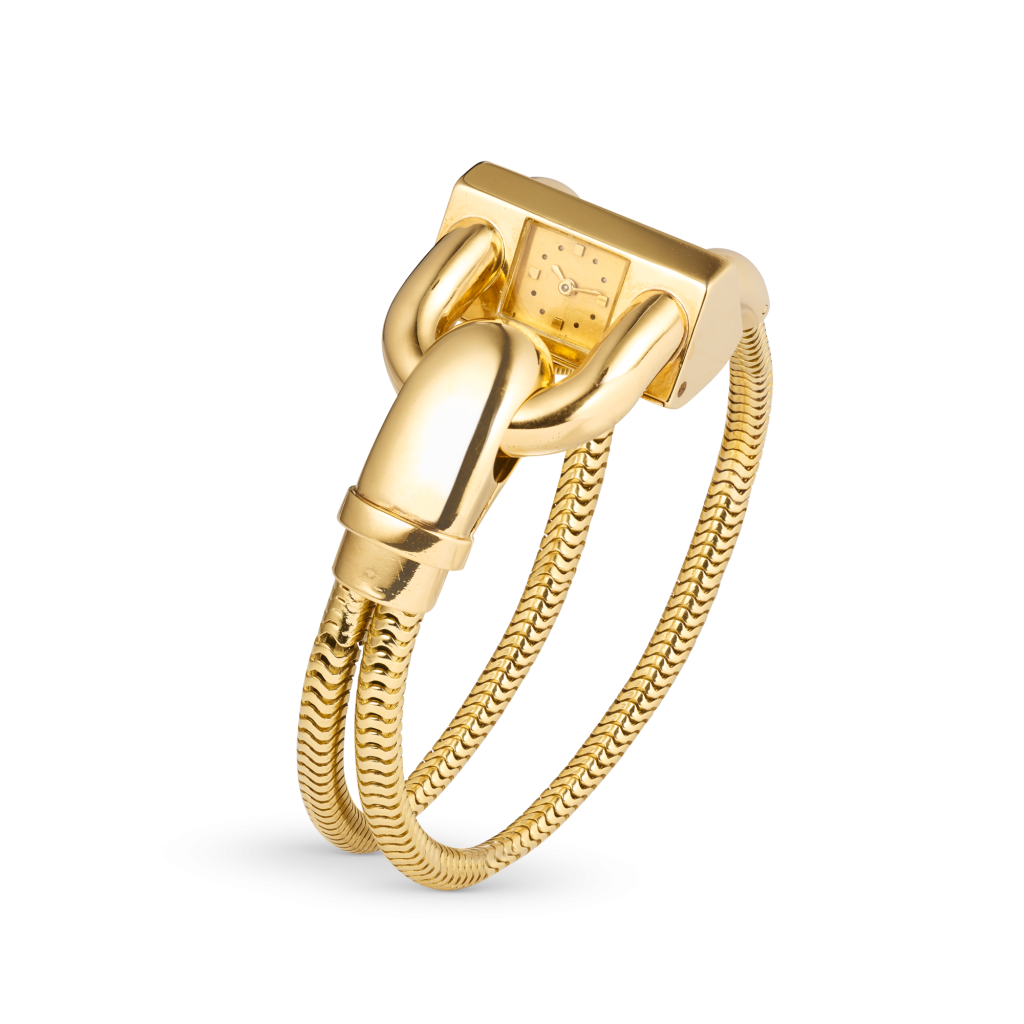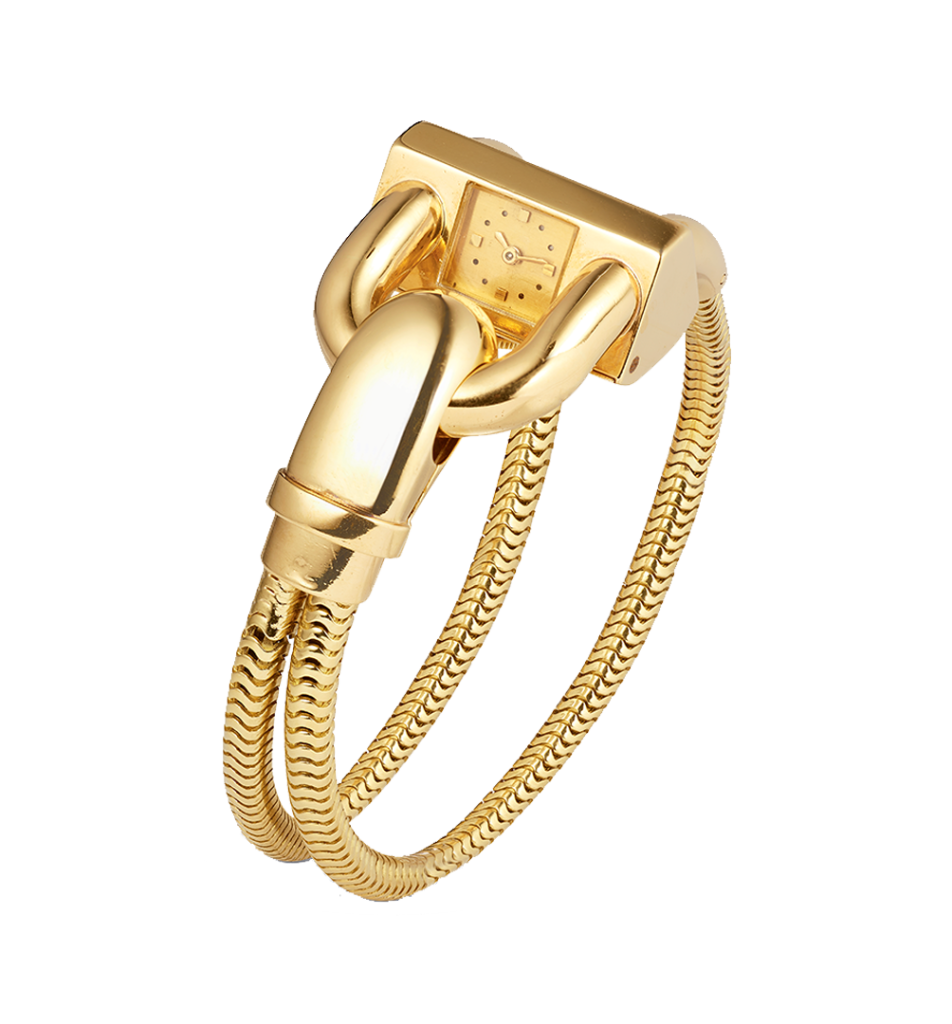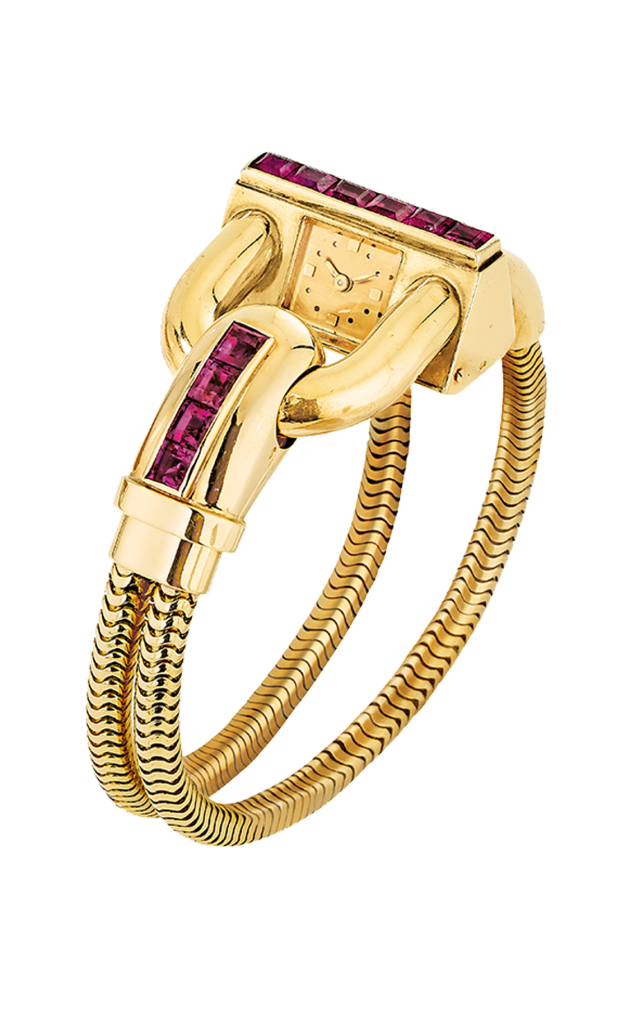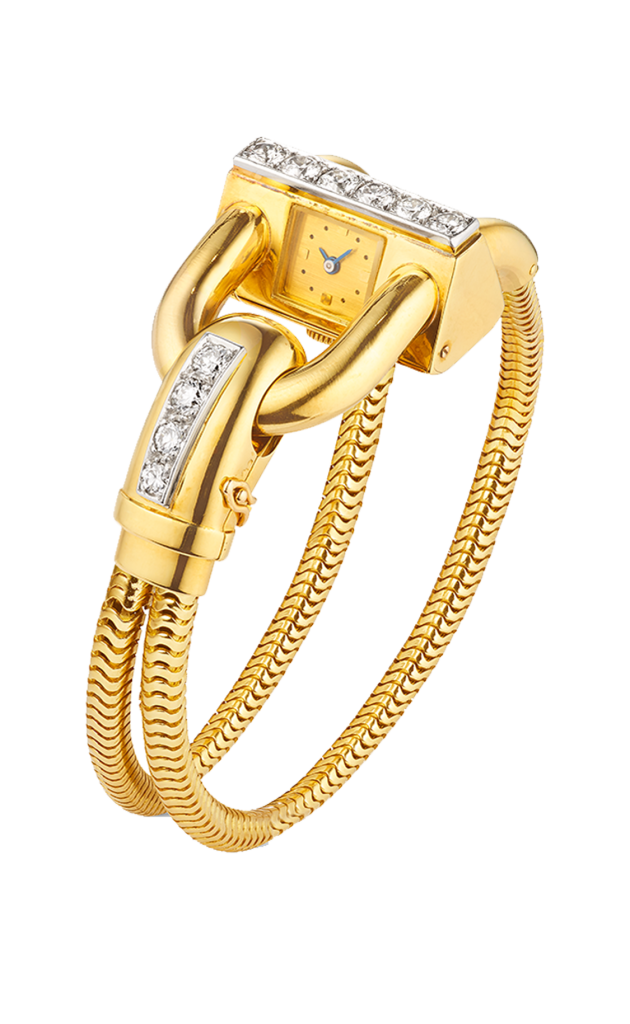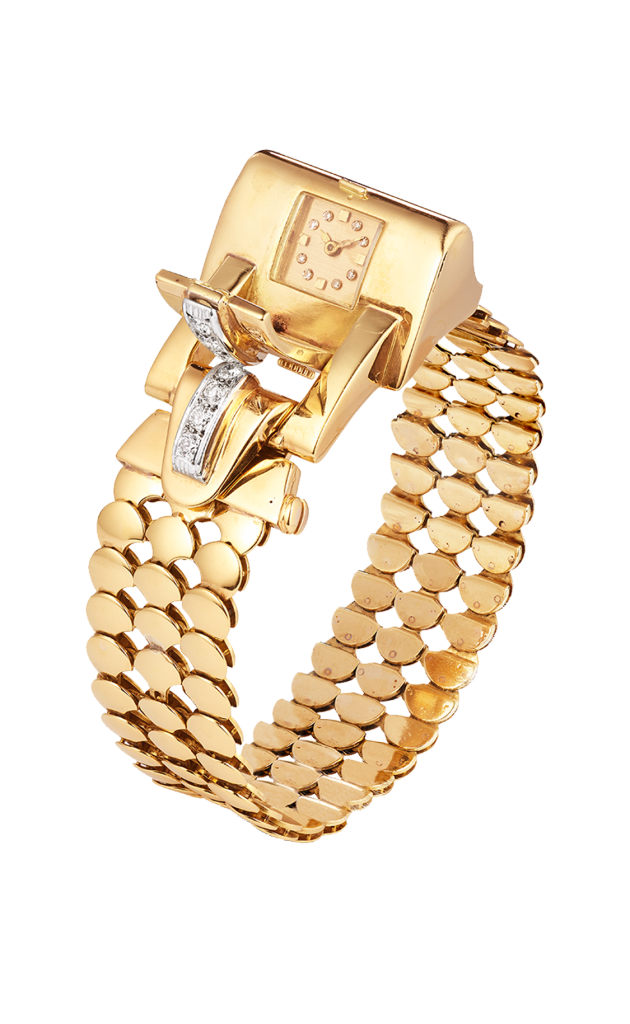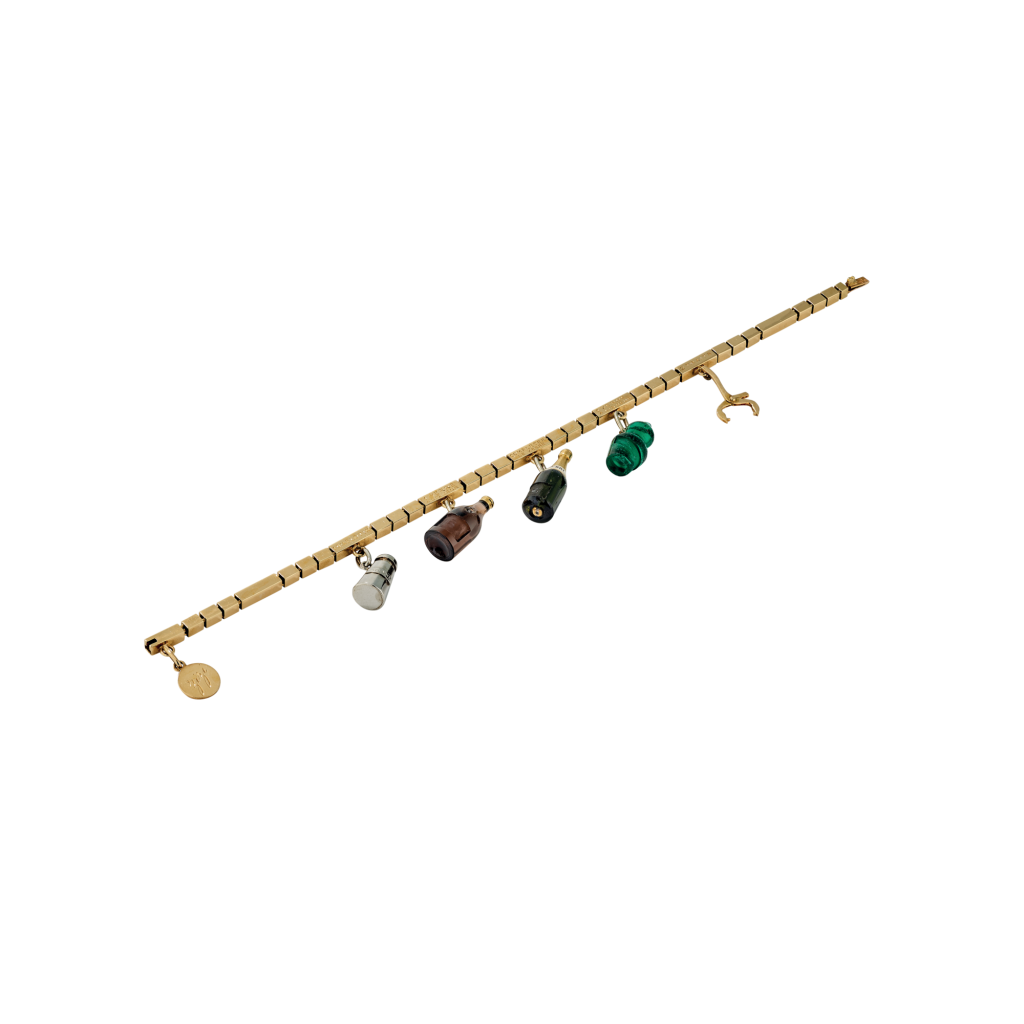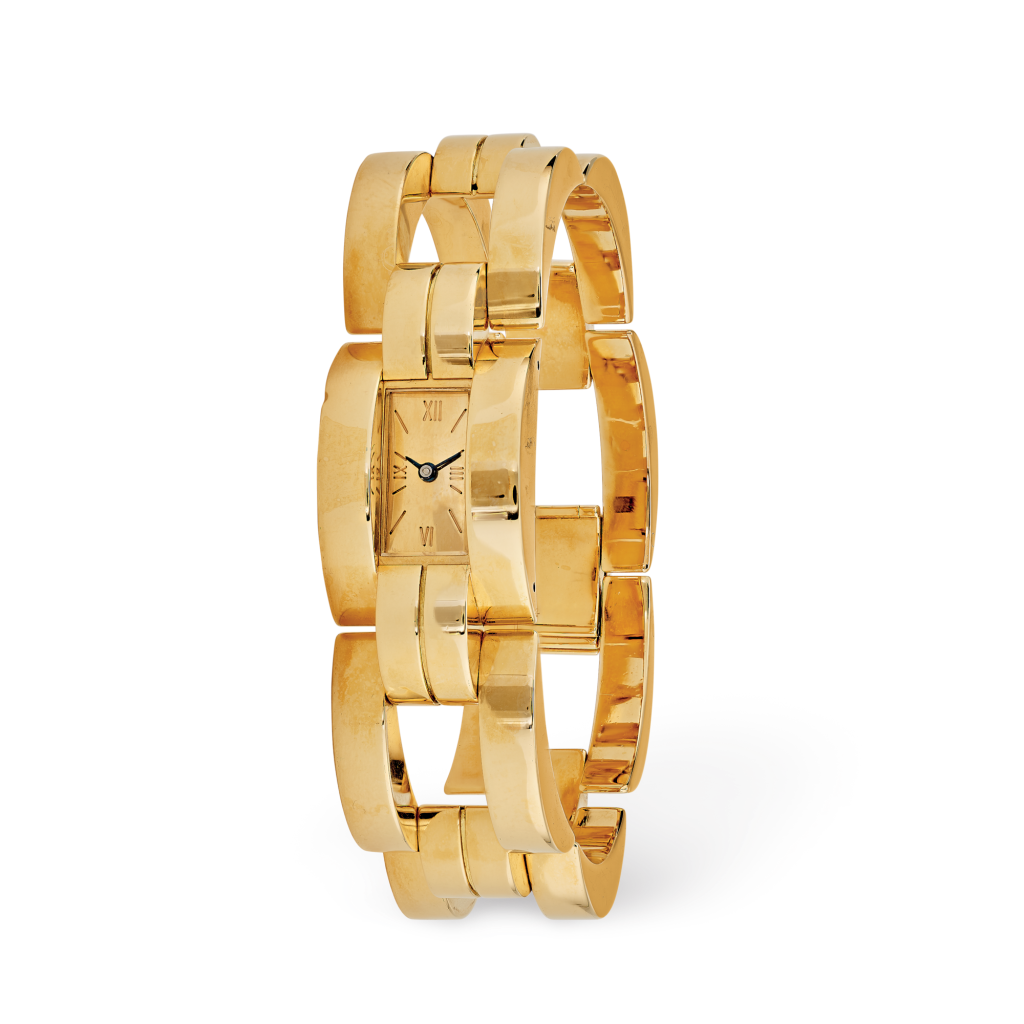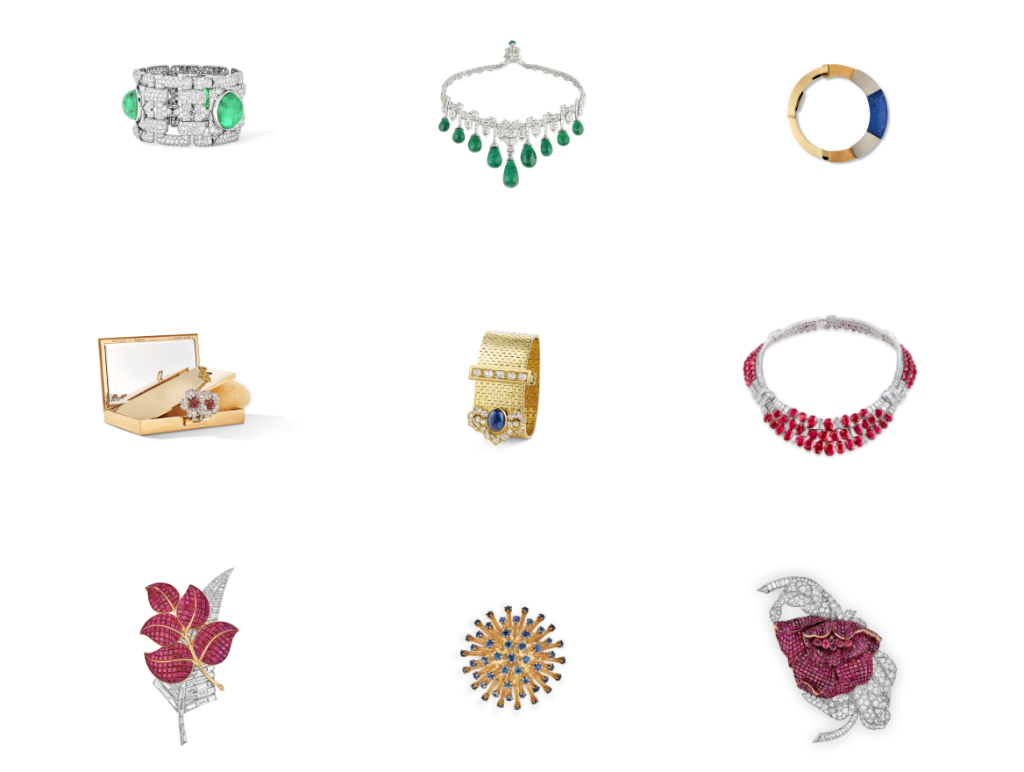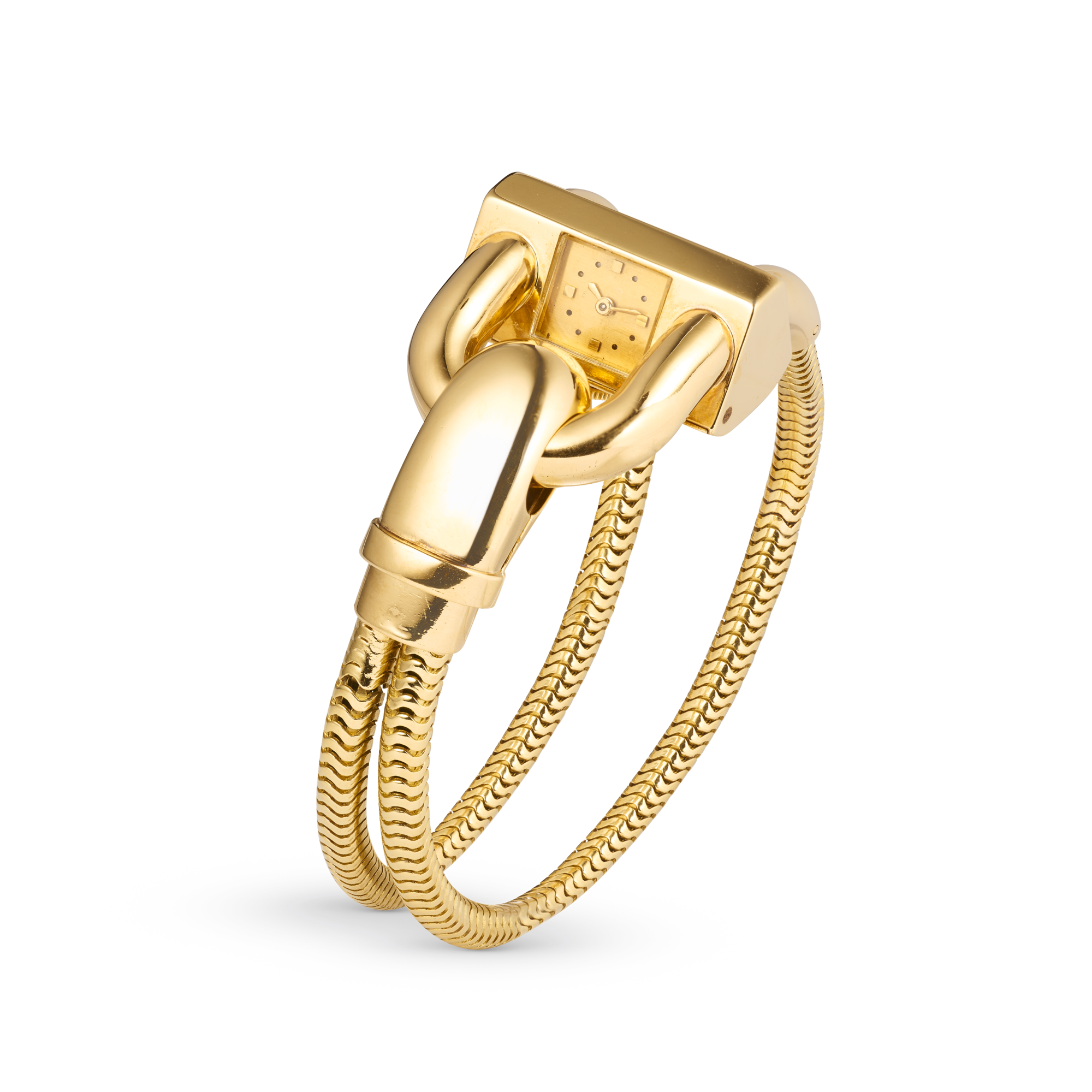
Cadenas watch

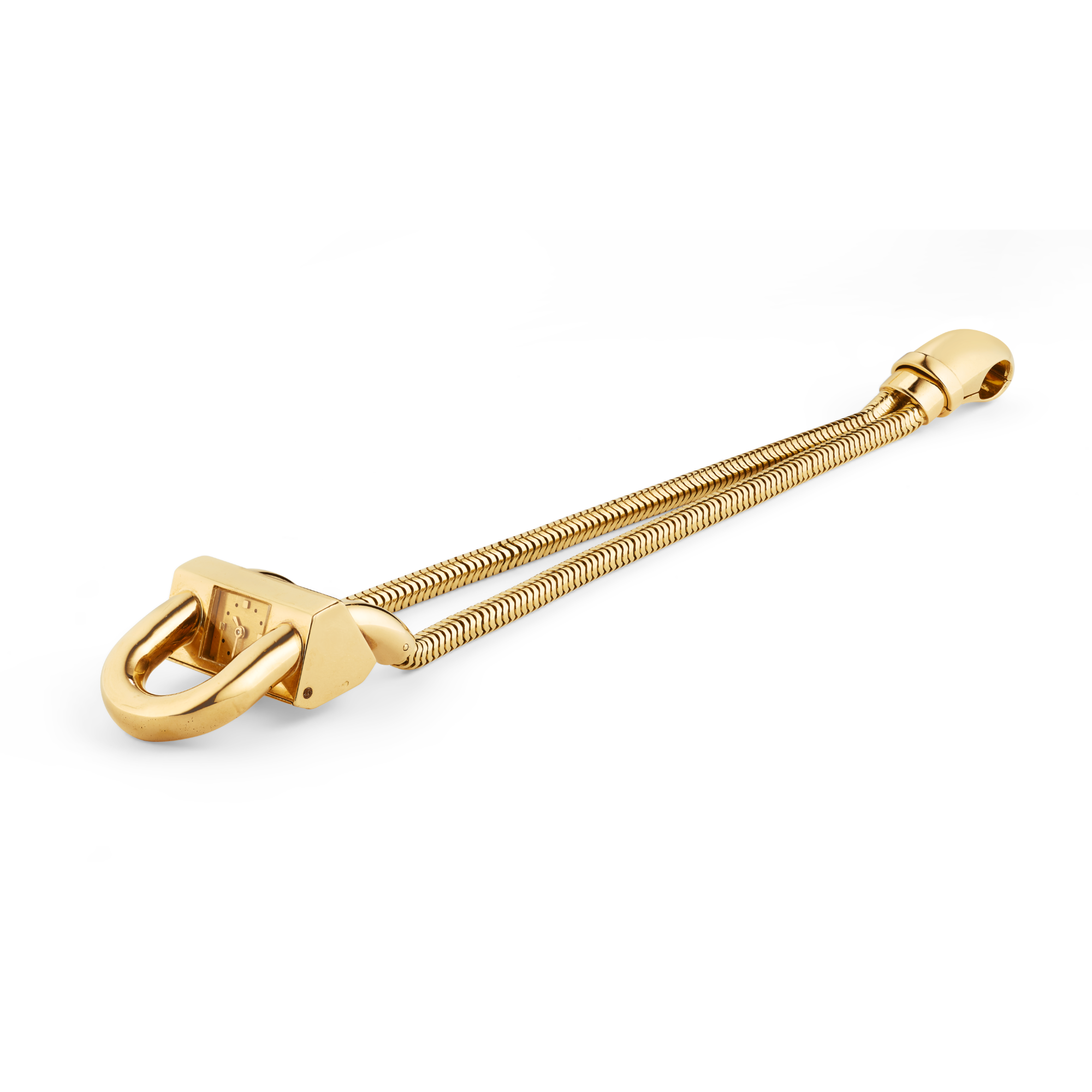
Creation details
- Creation year 1937
- Usage Watch
- Dimensions 190 × 25 mm
The Cadenas watch holds an important place among Van Cleef & Arpels’ emblematic creations. It was initially called a “staple” watch, only becoming “padlock” in 1946.
This bracelet watch was first commercialized in 1935, and is distinguished by its case in the shape of a prism with a hexagonal base ending in a hoop that in turn resembles the shape of a padlock. The clasp of a double circular-section snake chain fits around this handle.
Variations of the Padlock watch
The watch was initially produced in yellow gold before undergoing numerous chromatic variations, notably with the introduction in December 1936 of a calibrated sapphire or ruby pavé, which enhanced one side of the casing and the back of the clasp. It was not until 1938 that the range of precious stones extended to diamonds and then, occasionally, emeralds, after 1943. From 1936, the Cadenas watch adapted to the international taste for white diamond jewelry, contrasting pave-set brilliants with a row of baguette-cut diamonds, completed by a platinum snake chain.
A new relationship to everyday objects
By transposing the form of an everyday object—in this instance, a padlock—to the case of a watch, Van Cleef & Arpels demonstrated, for the first time, the new relationship with objects in the arts which came into its own in the 1930s. This process of reimagining an object, introduced by Marcel Duchamp in 1914 with the creation of his first readymades, was found in the work of the Dada artists, as well as the Surrealists. The Cadenas watch was in keeping with this re-evaluation of daily artefacts and echoed the readymade concept, as pronounced by the Surrealists in their Dictionnaire abrégé (Abridged Dictionary), published in 1938. It referred to “ordinary objects raised to the status of artworks purely as a result of the artist’s choosing.” “The readymades […] created by Marcel Duchamp from 1914, constituted the first Surrealist objects,”1André Breton, Paul Éluard, Dictionnaire abrégé du surréalisme, Paris (Galerie Beaux-Art): 1938. according to André Breton. Among those objects created at the same time as the Padlock watch were the Chapeau escarpin (Shoe Hat) designed by Elsa Schiaparelli, in collaboration with Salvador Dalí, in 1937.
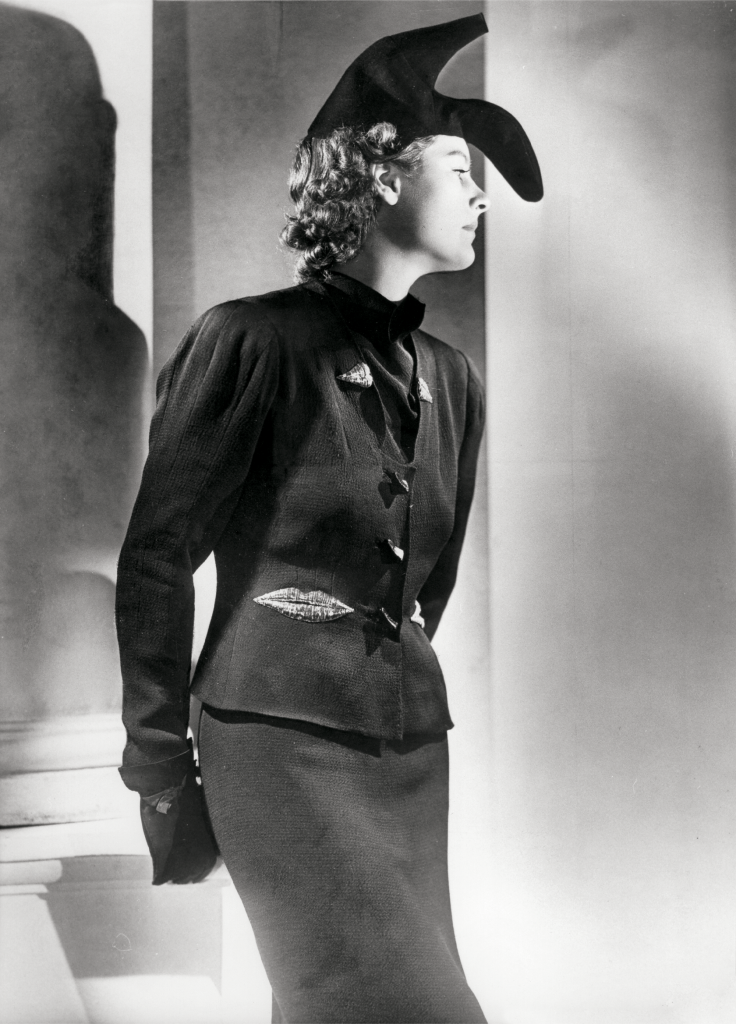
Sneaking a glance at the time
The originality of the Cadenas watch, which, at first sight, appeared to be purely one of form, was also to be seen in its adherence to one of the dictates imposed on fashionable women of the time, namely that they had to remain above all consideration of time passing. They therefore had to glance at their watch discreetly, the watch being fixed to the lapel of a jacket or in the form of a bracelet. It enabled the wearer “to sneak a glance at the time,” as seen in a 1936 advertisement,2Plaisir de France (July 1936): 8. thanks to its dial facing the inside of the wrist and the watch’s resemblance to a simple bracelet.
To go deeper
